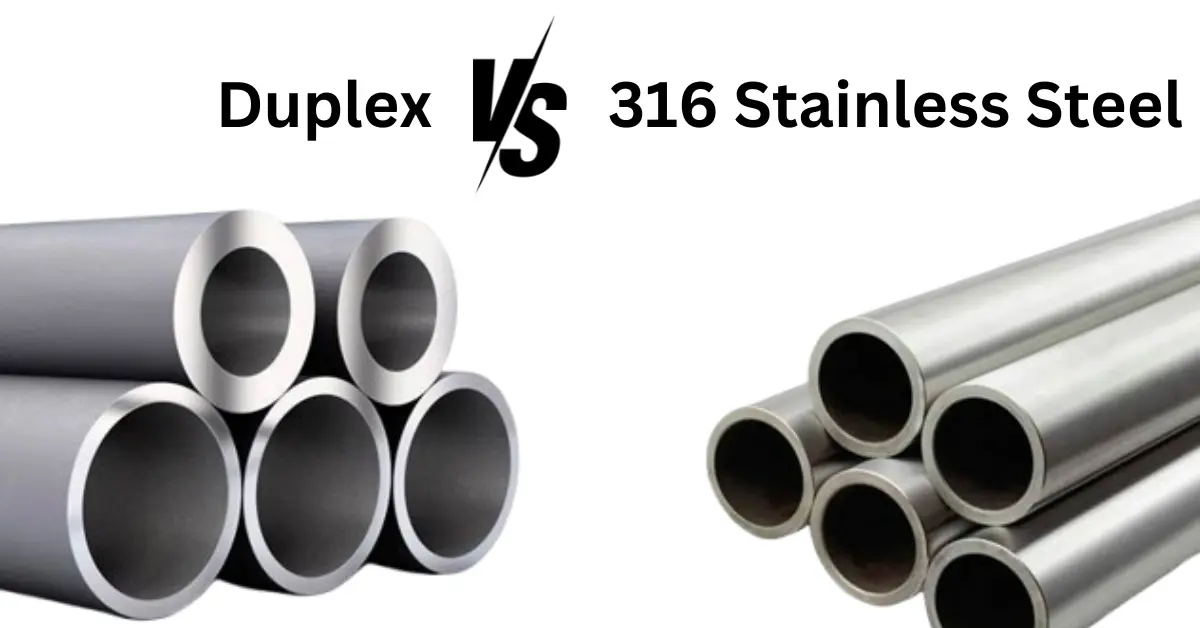Stainless steel is widely used across industries due to its corrosion resistance, durability, and strength. However, choosing the right type of stainless steel for specific applications can be challenging. Two common options are Duplex Stainless Steel vs 316 stainless steel. Understanding their differences can help in making an informed decision.
What is Duplex Stainless Steel?
Duplex stainless steel is a special category of stainless steel that combines the properties of both austenitic and ferritic stainless steels. It offers excellent corrosion resistance, high strength, and improved toughness compared to conventional stainless steels. This type of stainless steel is widely used in industries such as chemical processing, marine, and oil & gas due to its superior performance in harsh environments.
Key Features of Duplex Stainless Steel:
- High strength and durability
- Excellent resistance to stress corrosion cracking
- Better weldability compared to other stainless steels
- Cost-effective due to reduced nickel and molybdenum content
- Suitable for high-temperature and high-pressure environments
What is 316 Stainless Steel?
316 stainless steel is an austenitic stainless steel containing molybdenum, which improves its corrosion resistance, especially against chlorides and marine environments. It is widely used in food processing, medical equipment, and chemical industries due to its excellent resistance to oxidation and pitting.
Key Features of 316 Stainless Steel:
- High corrosion resistance, particularly in marine environments
- Good weldability and machinability
- Excellent durability and toughness
- Superior resistance to pitting and crevice corrosion
- Commonly used in pharmaceutical and food-grade applications
Comparison between Duplex Steel and 316 Stainless Steel
Understanding the differences between duplex stainless steel vs 316 stainless steel can help businesses select the right material for their applications. Here’s a direct comparison:
| Property | Duplex Stainless Steel | 316 Stainless Steel |
|---|---|---|
| Strength | Higher tensile and yield strength | Moderate strength |
| Corrosion Resistance | Excellent, especially against stress corrosion cracking | Good, especially against chlorides |
| Cost | More cost-effective due to lower nickel content | Higher cost due to molybdenum content |
| Weldability | Requires special techniques for welding | Easier to weld |
| Durability | High durability in harsh environments | Good durability but lower than duplex stainless steel |
| Applications | Oil & gas, marine, chemical processing | Medical, food processing, marine |
Difference between Duplex Steel & 316 Stainless Steel
Although both materials offer excellent corrosion resistance, their differences lie in composition, strength, and suitability for different environments. Below are some critical differences:
1. Composition:
- Duplex stainless steel has a mixed microstructure of ferrite and austenite, providing higher strength and resistance.
- 316 stainless steel is fully austenitic, offering good corrosion resistance but lower strength.
2. Strength & Durability:
- Duplex stainless steel has nearly twice the strength of 316 stainless steel, making it ideal for heavy-duty applications.
- 316 stainless steel, while durable, is not as strong as duplex stainless steel.
3. Corrosion Resistance:
- Duplex stainless steel is highly resistant to stress corrosion cracking and pitting, even in aggressive environments.
- 316 stainless steel is resistant to chlorides and acids but is more prone to stress corrosion cracking.
4. Cost-Effectiveness:
- Duplex stainless steel is often more affordable due to its reduced nickel and molybdenum content.
- 316 stainless steel is more expensive because of its high molybdenum content.
5. Applications:
- Duplex stainless steel is used in high-stress environments like offshore platforms and chemical plants.
- 316 stainless steel is preferred for medical, food-grade, and marine applications where hygiene and corrosion resistance are critical.
Which Stainless Steel Should You Choose?
The choice between duplex stainless steel vs 316 stainless steel depends on specific needs:
- If high strength, durability, and cost-effectiveness are essential, duplex stainless steel is a better option.
- If ease of welding, excellent corrosion resistance, and food safety are priorities, 316 stainless steel is ideal.
For industries requiring high-performance materials with long-term reliability, duplex stainless steel provides better value. However, for applications that demand superior corrosion resistance and non-reactive properties, 316 stainless steel remains a preferred choice.
Conclusion
Both duplex stainless steel vs 316 stainless steel have their advantages, and selecting the right one depends on factors like strength, corrosion resistance, and cost. If you need assistance in choosing the right stainless steel for your application, reach out to Tejdeep Steels for expert guidance and high-quality stainless steel products.
By understanding the fundamental differences between these two stainless steels, businesses can make informed decisions and invest in the right materials for long-term success.

